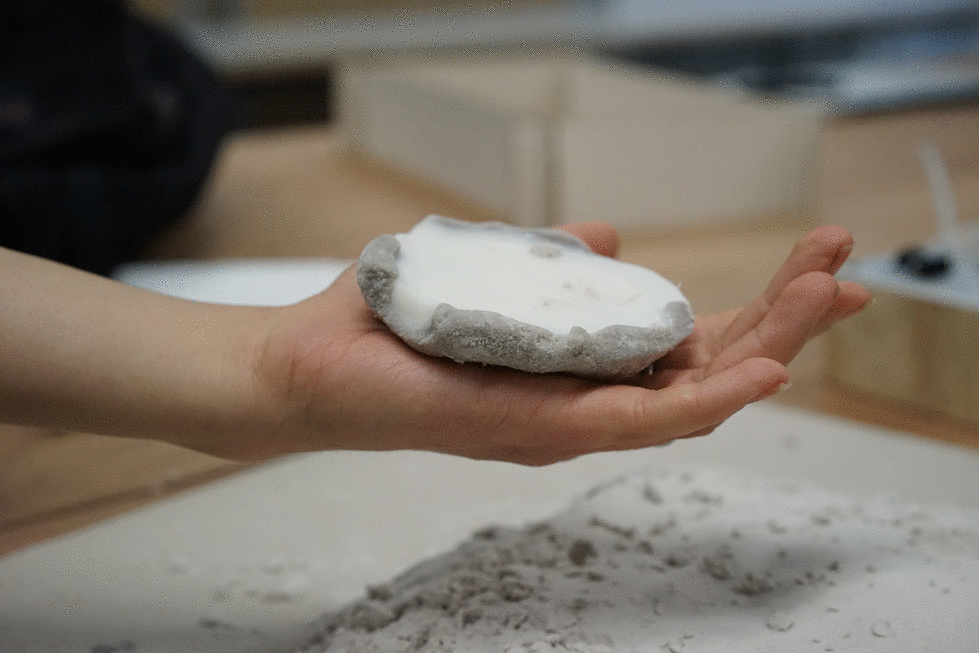11. January 2016
Main Idea
We both thought about creating something which could be used for different applications. With the help of vacuuming, we wanted to create a method that could stabilizing or soften itself and find its use for example in medical splints. Instead of going for a fully functional product we considered creating a prototype - namely a shoe sole - and focus on researching. The main purposes were to measure the different granulates and how they support ergonomic aspects.
Applied Research
The project involves different steps from easy studies to experimental attempts. Pressure measures and shapeliness are mental to our problem solving. The interior was created through footprints which were taken in different situations. The structures generally change its form when we are walking, so we needed to capture the right moment in order to recreate the best fitting arrangement. The granulates, with which we have experimented, are actually common materials. Most of them are used by everyone in their households, just like salt or coffee powder. We examined and picked the best ones in several approaches. Thus, they were tested in their flexibility and their hardness when vacuumed as well.

Production
The production of our inserted sole was mainly steered by our materials and settings. For the pressure measures, Ramona stepped into the paint and walked with varying pressure over a bigger piece of paper. Subsequently, pictures were taken of her footprints and together we created a construction body for our sole in Illustrator. We also experimented with sand mold, wax, cement, 3D scanning and printing. For an accurate reproduction, we needed to work with negative and positive forms. The form, which we later filled out with silicon, was cut in-house with our laser cutter. After drying, the inner living needed to be added to the shell, so then the granulate was divided and filled in the given container. We also thought about an air canal system, through which the air could escape once stepped on the sole to create the vacuum. We were capable of building this with holes in the silicon shell and a thin net which was placed right in front of the openings.
